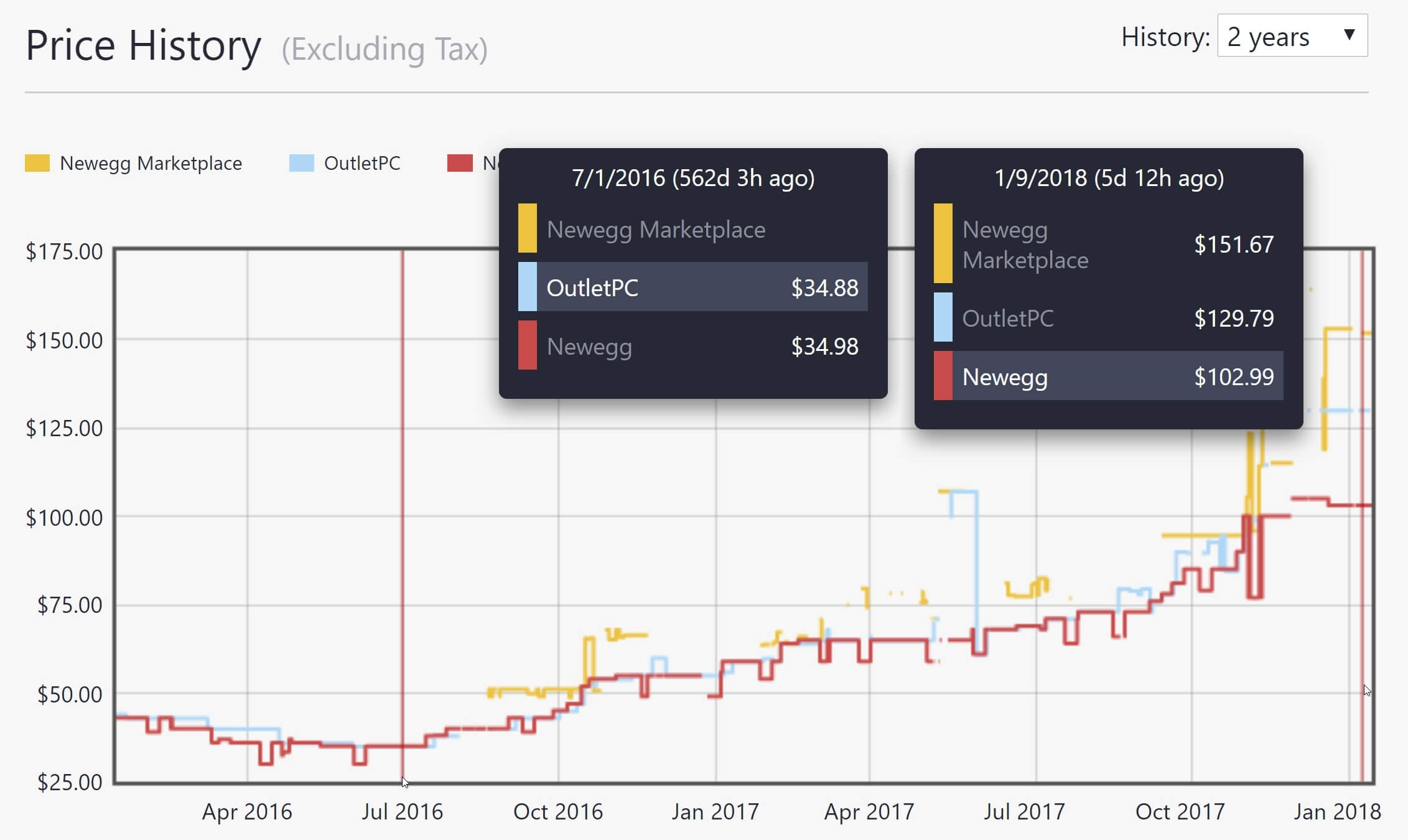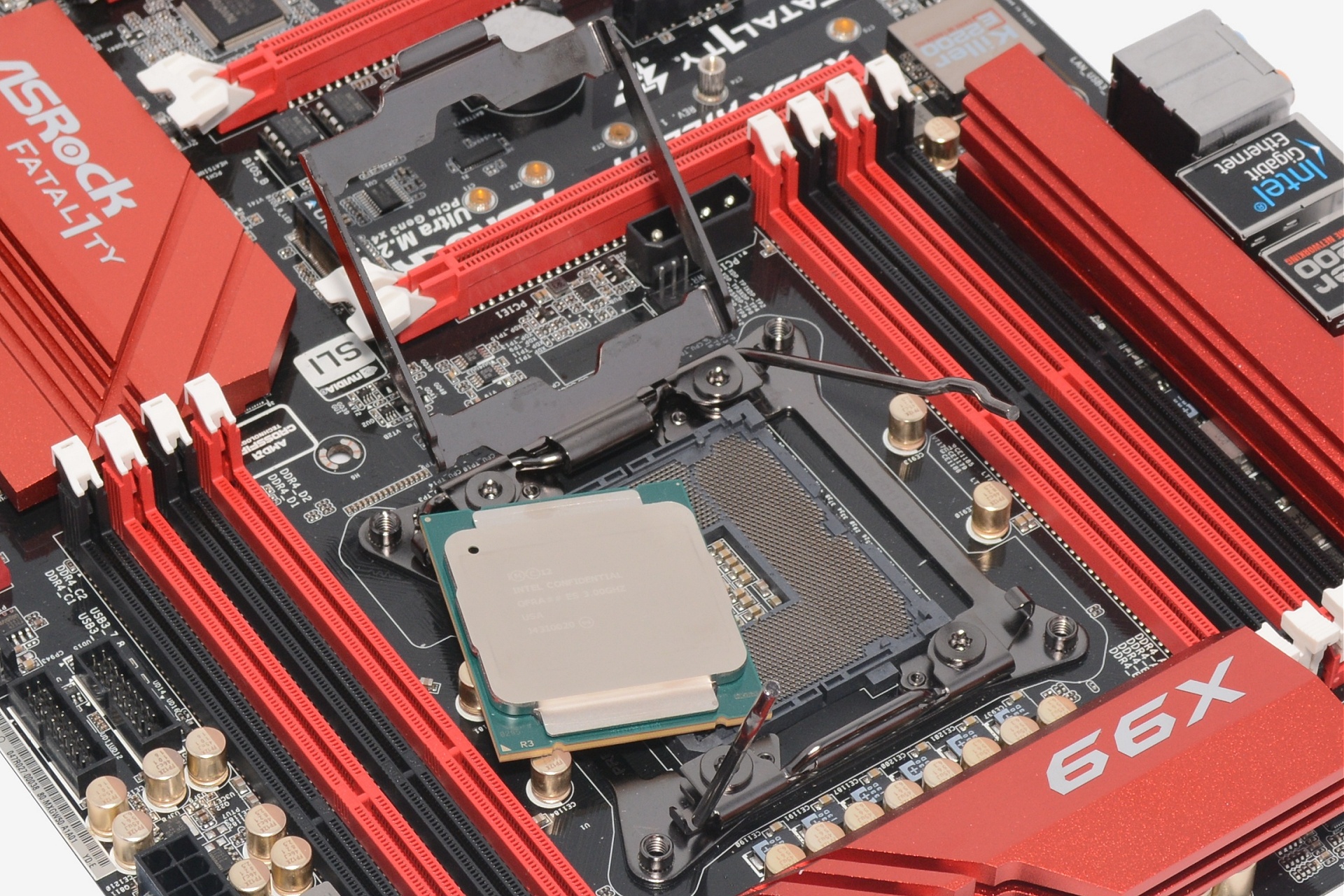The Puri for Rent (2025)past twelve months turned out to be some of the most exciting times we can remember for building a new computer. Last March saw the launch of Ryzen ending half a decade of AMD being 'bulldozed' by the competition. From that point forward it was busy for PC hardware, including the release of new graphics cards and Intel having a second go at things with Coffee Lake after an underwhelming Kaby Lake launch. However, for as much as there was to be excited about regarding computer hardware in 2017, there was plenty to be upset about as well.
Unfortunately, some of these problems have gotten worse and will probably continue to worsen throughout 2018, which is going to make it increasingly difficult to build a PC. Part one of this series will be dedicated discuss DDR4 memory pricing and why it's so high.
RAM pricing is currently a big issue plaguing those wanting to build a new computer or even update an old one. From July 2016 to July 2017, the market saw a 111% increase for the average selling price of DDR4 memory, and it has continued to increase since then.

An 8GB DDR4-2400 memory kit went for around $35 in 2016. A year later you could expect to pay a little over $70 for the same product. Today you're looking at an asking price of at least $90, or 170% more than what we were paying roughly 18 months ago.
But why is this? First and foremost, it's an issue of supply and demand. And while it's difficult to predict exactly when supply will improve, most reports suggest this won't happen until late 2018 when manufacturing of 64-layer and 96-layer 3D NAND flash reaches maturity. Until then, demand will continue to heavily outweight supply.
So, okay, it's a supply issue – but why? What's the main driver behind either supply decreasing or demand increasing? I believe we've been faced with a sort of double whammy.
The major DRAM suppliers shifted focus away from DDR4 production due to tight margins, investing elsewhere, while growth in the traditional desktop sector over previous years was slow and nobody wanted to pay a premium for DDR4 products, resulting in a loss of interest from manufacturers who couldn't meet their planned targets and returns.

With limited demand in late 2014 with Intel's Haswell-E and Haswell-EP range which continued in 2015 with Skylake and then again 2016 with Broadwell-E, the limited supply wasn't an issue. However, in 2017 we saw a rapid shift in market demand toward desktop computing, not just Intel but now also AMD were shipping processors supporting DDR4 memory.
Perhaps an even bigger factor, the smartphone industry has increased demand of not just DRAM but NAND as well. It's worth highlighting that it's a different type of DDR4 memory which is produced for the mobile market (Low Powered DDR4 or LP DDR4), and manufacturers such as Samsung make more profit selling LPDDR4 memory in premium smartphones.
With demand outweighing supply, prices increased and DDR4 margins were no longer tight. By mid-2017, pricing of memory modules soared significantly and unfortunately it doesn't look like manufacturers will be ramping up production any time soon.
According to market research firm DRAMeXchange, the three major DDR4 suppliers (Samsung, SK Hynix and Micron) slowed down their capacity expansions and technology migrations to maintain prices in 2018 at the same levels seen in the second half of last year, which is presumably related to their interest in sustaining strong profit margins.
The construction of new fabs is underway to help the strained supply but they won't be ready for mass production until 2019 at the earliest. It's predicted by Gartner that DDR4 pricing will crash in 2019 and history would suggest this is likely to happen as that's the cycle we go through every few years with memory pricing.
China has the potential to change things here with its aggressive approach to the semiconductor market, which could cause pricing to become even more unpredictable. Chinese memory could flood markets worldwide causing pricing to plummet. Right now there is a large number of Chinese fabs being built and it is expected that the country will take second place for investment in semiconductors this year as it equips the many new fabs that began construction in 2016 and 2017.

It's also been reported that China's National Development and Reform Commission is investigating the possibility of DRAM price-fixing between the major industry players, and this has of course been sparked by the price surge we've been talking about. If found guilty, it's hard to predict what the ramifications would or could be, so we'll have to see how that story plays out. It would appear as though they do have quite a bit of power here, as SK Hynix and Samsung both have a number of facilities in China.
So if you have a choice: hold off on building your new PC until later in 2018 (or longer) or simply accept the hit on memory pricing. PC gamers will ideally want 16GB these days and those kits cost at least $170, with premium memory priced closer to $200. Granted, the same kit would have costed around $75 in the good old days, but try not to dwell on that.
Inflated DDR4 memory pricing is only one of the problems you can expect to face when looking to upgrade or build a PC in 2018, and in the next part of this series we're going to discuss what's going on with GPU pricing and what we can expect later this year.
2017 was an exciting year for PC hardware but it wasn't all roses. The warning signs we saw are painting more difficult in 2018. In this 3-part series we discuss why building a new gaming PC is not a great idea at the moment, or at the very least, it's going to come at great expense.
 'Black Mirror' Season 7: 'Hotel Reverie,' explained
'Black Mirror' Season 7: 'Hotel Reverie,' explained
 NaNoWriMo says use AI if you want. Here's why you might.
NaNoWriMo says use AI if you want. Here's why you might.
 Best Amazon tablet deal: Save $65 on Fire HD 10 tablet
Best Amazon tablet deal: Save $65 on Fire HD 10 tablet
 Best Laptop deal: Save £230 on Acer Aspire 5
Best Laptop deal: Save £230 on Acer Aspire 5
 Gmail search just got a lot smarter, thanks to AI
Gmail search just got a lot smarter, thanks to AI
 25 horror movies perfect for Christmas: streaming guide
25 horror movies perfect for Christmas: streaming guide
 iPad Air vs. iPad Pro: What are the differences between the new 2024 models?
iPad Air vs. iPad Pro: What are the differences between the new 2024 models?
 Wordle today: The answer and hints for November 1
Wordle today: The answer and hints for November 1
 Best iPad deal: Save $100 on 13
Best iPad deal: Save $100 on 13
 MotoGP livestream: Watch the 2024 Malaysia Grand Prix for free
MotoGP livestream: Watch the 2024 Malaysia Grand Prix for free
 Best Black Friday VPN deal: 74% off + 3 months free
Best Black Friday VPN deal: 74% off + 3 months free
 NaNoWriMo says use AI if you want. Here's why you might.
NaNoWriMo says use AI if you want. Here's why you might.
 Google Maps is using Gemini to help you make plans
Google Maps is using Gemini to help you make plans
 UGREEN Nexode 25000mAh 200W power bank drops to $79.99 at Amazon
UGREEN Nexode 25000mAh 200W power bank drops to $79.99 at Amazon
 NYT Strands hints, answers for October 31
NYT Strands hints, answers for October 31
 Apple Watch Series 9 vs. Ultra 2: What are the differences?
Apple Watch Series 9 vs. Ultra 2: What are the differences?
 Webb and Hubble telescopes provide a preview to galactic cannibalism
Webb and Hubble telescopes provide a preview to galactic cannibalism
 M4 Mac mini: Why you should get it over the M4 MacBook Pro
M4 Mac mini: Why you should get it over the M4 MacBook Pro
Philippines' first transgender politician delivers emotional speech on antiB&W P7 Wireless headphones are all about sound over features6 other couples that will restore your faith in a postA Michael Jordan cardboard cutout meant everything to one young fanChristopher Darden says he's guilty...of hooking up with Marcia ClarkTim Tebow cut a special deal so you can buy his Mets jersey9 times Brangelina were the actual bestYour Tinder match can now judge you by your mostWorld leaders approve plan to tackle refugee crisis6 other couples that will restore your faith in a postHow one girl helped lead the fight against child marriage in MalawiWhat happens when a terror suspect is caught alive?Just 3% of Americans own nearly half of all guns, survey findsNYT mini crossword answers for June 7, 2025Donald Trump Jr. stole a refugee's photo for his antiDavid Letterman is coming back to TV as a bearded environmentalist'Destiny: Rise of Iron' is out, read all about it hereSon of China's richest man shows off his dog's 8 iPhone 7sA Kennedy says a Bush is voting for a Clinton on FacebookThis is why Donald Trump Jr.'s Skittles meme makes no sense HP thinks its new 15 Most experts predict capitalism will survive job Tesla is building 'world's most advanced paint shop' at Berlin Gigafactory Sony is giving away 'Journey' and 'Uncharted' for free on PlayStation 4 Apple's iPhone SE pre Technical glitches prevent millions from getting IRS stimulus checks Apple finally made my dream phone: 2020's iPhone SE Orangutan kept in a tiny wooden box for two years is finally rescued 'The Hunger Games' to stream free for one night only How Easter and Passover are going digital during the coronavirus outbreak Waze now shows emergency food centers, coronavirus testing sites Activists target ads at lawmakers who voted to sell your data for targeted ads Reddit's new political ad rules let you see who's spending what 'Killing Eve' Season 3 plays it safe, even with murder HBO’s 'Run' is a sexy, silly escape from reality: Review ASUS Chromebook Flip C436 Review: A flexible laptop for our stay 9 weird, free stock images that make excellent Zoom backgrounds 5 companies that give back when you buy a face mask You're living amid a U.S. megadrought FBI director is 'nauseous to think' his letter swayed the election, but he had to
2.1999s , 10133.4765625 kb
Copyright © 2025 Powered by 【Puri for Rent (2025)】,Exquisite Information Network